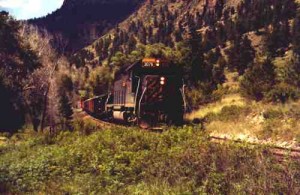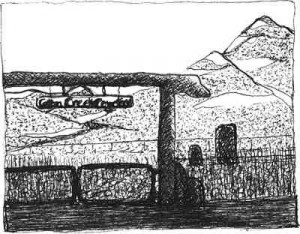Sidebar by Ed Quillen
Pike – February 2006 – Colorado Central Magazine
The best place to start, of course, is with Pike’s journals. The original 1810 version is an extremely rare book. In 1895, the journals were edited and annotated by Elliott Coues, and published in three volumes by Francis P. Harper. In 1987, Dover issued that in two paperbound volumes, complete with large maps in a pocket. Volume I covers his expedition to the source of the Mississippi; Volume II concerns the Mexican venture of most interest to us.
The Expeditions of Zebulon Montgomery Pike are, alas, out of print, and Dover has shown no interest in reviving them. They are however, available on the used- book market; the last time I checked, they were under $20 apiece — about what they cost when I bought mine at Creekside Books a decade ago.
If you want to go on- line, the best single Pike account comes from the National Park Service, and it’s at http://www.nps.gov/jeff/LewisClark2/Circa1804/WestwardExpansion/EarlyExplorers/ZebulonPike.htm
For the truly obscure American expedition that was aimed at the same area at the same time, find Southern Counterpart to Lewis & Clark: The Freeman & Custis Expedition of 1806, edited by Dan L. Flores and first published in 1984 by the University of Oklahoma Press. It is still in print. I won’t say it’s a real page- turner, and it never gets anywhere near Colorado, but even so I found it interesting.
For years, I thought Pike’s trip was the southern counterpart. I learned differently from Clay Jenkinson when he was in town impersonating Thomas Jefferson. But until this book, I didn’t know there really was a true southern counterpart, led by trained naturalists.
The Wilkinson- Burr conspiracy has yet to be totally unraveled. Gore Vidal’s novel Burr is great reading, and a good introduction to the era and its characters.
For nonfiction, I generally rely on The Burr Conspiracy by Thomas Perkins Abernethy, published in 1954 by Oxford University Press. There are scores of other books on the topic, but be warned it’s a murky area, probably more suited to the novelist than the historian.


